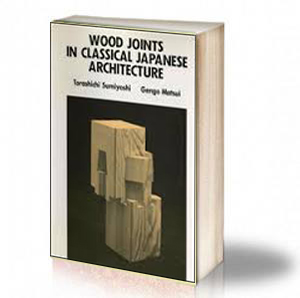Japanese architecture brings to mind stupendous Buddhist temples and
shrines, plus the three- and five-story pagodas. Amongst these sacred places,
one cannot help being overwhelmed by the radiance emanating from the
structures. The purity of the lines leaves us in awe.
Master craftsmen, inspired by the beauty of the Japanese cypress and
Belkova and influenced by the Japanese culture, produced these works ot art.
Behind the beauty lies the skill and knowledge ol an artisan. The harmony
of die creation conceals the complexity of the assemblage. Simple elements,
such as bearing blocks, all play a role in the final result.
There are many ways to join members together. Beams can be tied with
ropes, carved and assembled or connected with nails, screws and glue, When
these structures were erected, joining was an extremely elaborate technique.
Master jointers were dedicated craftsmen responsible for splicing and connect-
ing elements of a building. Many factors had to be considered. The connec-
tions had to be strong enough to transfer forces such as bending, torsion and
shear, yet appearance was an important factor. A variety of techniques
sometimes simple, sometimes elaborate were developed.























